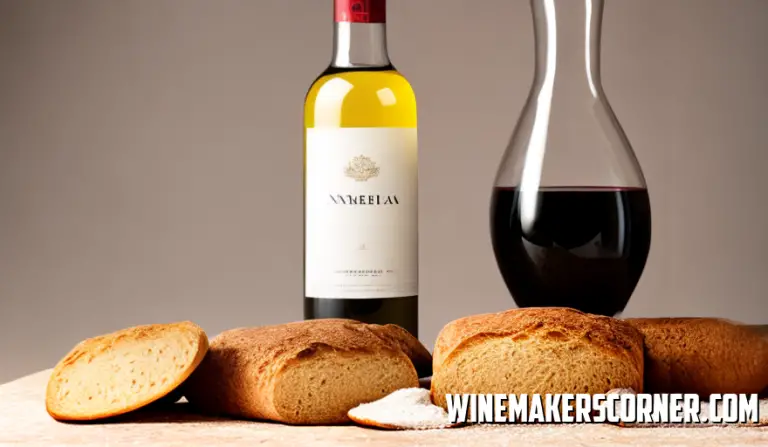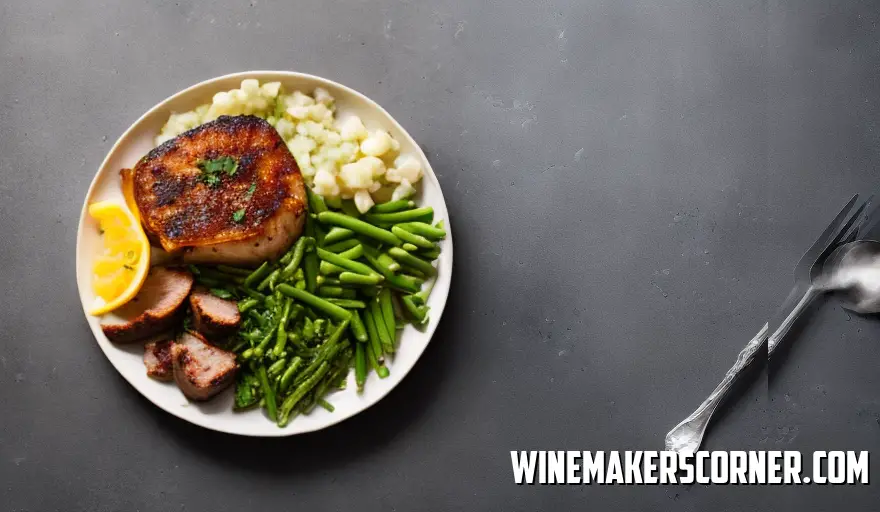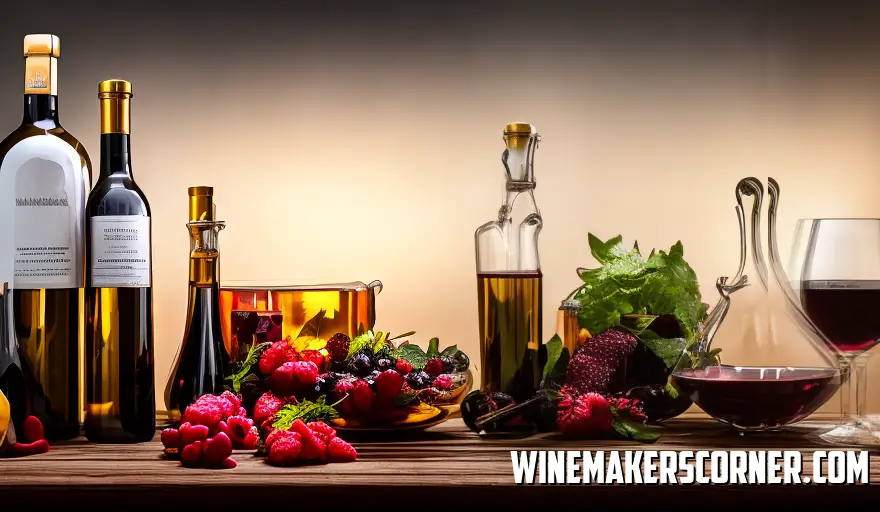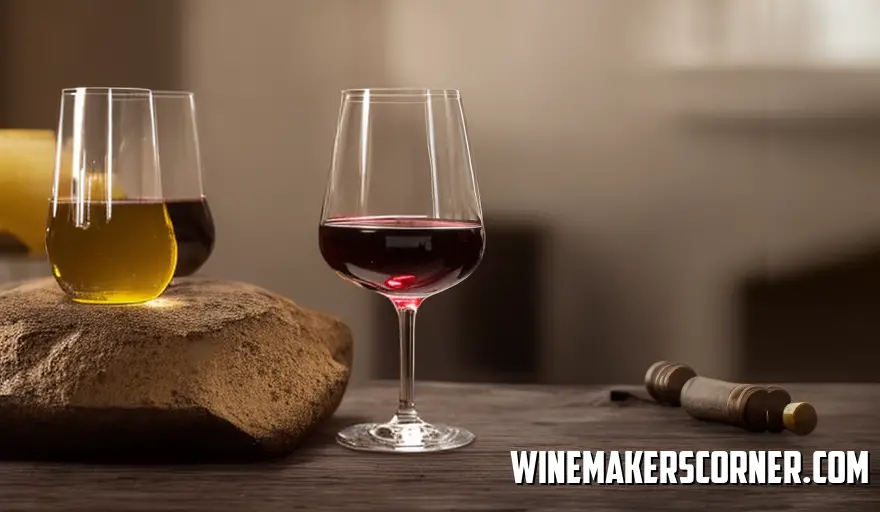Prepare yourself for a magical adventure into the enchanting world of fermentation! This is a mysterious realm where tiny microorganisms work tirelessly behind closed doors to turn basic ingredients into complex and delightful mixtures that we adore. But beware dear reader; not all yeasts are created equally magnificent! Todays journey takes us deep inside these small organisms’ fascinating world where we discover the significant differences between two seemingly alike but astonishingly diverse creatures: wine yeast and bread yeast. We’ll be astonished by their distinct capabilities as they perform a beautiful dance during perfect fermentation. So get ready grab your favorite glass of vino or loaf of bread (or both!) and lets embark on this exciting exploration that will surely leave you captivated!
Wine Yeast vs Bread Yeast: An Overview
On the surface it might seem like wine yeast and bread yeast are interchangeable – but don’t let appearances deceive you! To become an expert at fermentation understanding these two types of yeasts’ unique characteristics is vital. So lets explore. Although both wine and bread yeasts share the scientific name Saccharomyces cerevisiae generations of selective breeding have molded them into distinct strains with specific purposes.
These dissimilarities significantly affect your final result – whether it be bubbly champagne or a crusty sourdough boule.
So what sets these strains apart? For starters brewers yeast (for winemaking) boasts much higher alcohol tolerance than bakers yeast (8% vs 14%).
Additionally temperature is a crucial factor in both fermentation processes – brewers’ yeasts thrive in cooler environments between 50 68°F allowing for slower fermentation and the development of more complex tastes and aromas. To achieve rapid CO2 production and quicker dough rise bread yeast likes it warm at around 70 85°F whereas wine makers seek out specific yeast strains that create fruity esters or spicy phenols that artistically complement grape varietals. The neutral flavors from bread yeast won’t cause any interference with bakers’ desired taste profiles but wine yeasts are better at reabsorbing byproducts during fermentation resulting in fewer off flavors than what bread yeasts could produce if used in winemaking.
Bread and wine yeasts share an origin – Saccharomyces cerevisiae – but were selectively bred and evolved over time for purposes specific to their respective industries. Understanding these differences between them is key for a perfect fermentation whether you’re making mouth watering bread or crafting exquisite wines.
The Science of Fermentation
Exploring the topic of fermentation science can be fascinating stuff! Especially when you dive into the differing traits between wine yeast and bread yeast – although similarly natured creatures they possess special characteristics that play a crucial role in developing the perfect product through fermentation. In this article we’re going to go deeper into each type of yeasts unique qualities and how they contribute to ideal fermenting results. Wine yeast (Saccharomyces cerevisiae) is an individual celled organism that feasts on sugar then turns it into ethanol and carbon dioxide during fermentation; giving wine its beloved flavors & fragrances.
On the other hand bread yeast may belong to the same species but has been selectively bred differently in order to serve different purposes compared with its vinous counterpart. One distinguishing factor between the two yeasts is their tolerance levels for alcohol. Wine yeast can withstand higher amounts of alcohol (up to 16% or more) whereas bread yeasts limit maxes out around 5%.
Due to this difference in alcoholic endurance wine yeasts are better suited for producing alcoholic beverages at the desired strength. Flavor profiles make another remarkable differentiation point between wine and bread yeasts; wine yeasts are cultivated for enhancing specific flavors in wines while bread yeasts focus on generating gas for dough leavening. If you use bread yeast in your winemaking ventures be prepared for off flavors and an unbalanced final product.
Temperature also plays a critical role during fermentation as it affects the type of wine produced: fruitier wines come out when fermented at cooler temperatures while bolder ones are created from warmer conditions. Conversely bread doughs optimal rising temperature lies between 95 100°F (35 38°C) for even rising using consistent heat control techniques throughout its preparation process. The two types of yeasts further differ based on their fermentation speeds; wine takes longer to ferment due to its slower paced reaction aiding flavor development over days or weeks while bread rises much faster because it creates gas quickly from rapid yeast activity within hours.
Henceforth having a thorough understanding of both types’ characteristics is vital if you want perfect results every time you make homemade wine or bake bread loaves. These unique properties such as alcohol tolerance levels, flavor enhancement abilities, temperature preferences and fermentation speeds all contribute to the distinct outcomes of each process. So always remember that selecting the right yeast is the key to unlocking your creations full potential.
Key Characteristics of Wine Yeast
While related, wine and bread yeasts serve entirely different purposes when it comes to the process of fermentation. Wine yeast is specially selected for cultivating grape juice into wine – able to handle higher alcohol levels while elevating its aromatic profile. Conversely, baker’s yeast is engineered primarily for baking where carbon dioxide production helps dough rise. A multitude of strains are available in the market with unique characteristics such as fruitiness or complexity in taste – offering winemakers options tailored towards their specific grapes and end product goals.
Temperature tolerance also sets these two apart – wine yeasts adapt better than bakers under various environmental conditions ensuring consistency from batch-to-batch despite fluctuations outside one’s control. More impressively- their ability to metabolize sugar effectively even under high concentration allows them not only manage osmotic pressures but efficiently convert sugar into alcohol. The way that yeast cells come together through flocculation holds significant weight when it comes to producing high-quality wines.
Depending on the type chosen by producers, different levels of flocculation may occur with varying outcomes on flavor outcomes.By choosing a low-flocculating yeast strain over others you can expect more extended amounts time where contact is made with grape solids which leads to superbly rich tastes bursting with aroma. Because bread yeasts don’t provide these same benefits it’s essential that only wine yeasts are used to ensure consistent and successful fermentation. By being precise in the selection of strains and temperature control during production, winemakers can use these organisms to create wines that are truly remarkable.
Key Characteristics of Bread Yeast
Fermentation represents a world full of diverse yeast species imbued with unique properties for specific applications. One such example is household staple bread yeast, which some consider incorporating into their winemaking activities. However its important to note the significant differences between bread yeast and specialized wine strains that impact the final product.
Primarily bread yeasts outstanding features lie in its rapid gas production capacity that speeds up dough expansion. But in winemaking scenarios this quick process could interfere with achieving an optimal flavor balance. Specialized wine strains are selectively cultivated based on their proficiency in delivering complex tastes and enhancing aroma profiles.
Moreover the temperature requirement is another distinguishing factor between these two yeasts. Bread yeasts perform optimally at warmer temperatures between 25 35°C(77 95°F) whilst specialized wine strains can ferment effectively at much lower temperatures (10 20°C / 50 68°F).Thus maintaining fruity aromas and averting detrimental bacterial growth. Lastly yet equally crucial is alcohol tolerance levels.
Bread yeast typically possesses a lower tolerance level ranging between 5 -8% ABV whilewine strainscan survive well under higher alcohol concentrations up to or more than16% ABV. When winemaking is on your mind using bread yeast might sound like an easy solution. But be warned: It can cause incomplete fermentation and residual sugars that lead to an unbalanced final product.
So in short? While this type of yeast may seem like a convenient alternative for enthusiastic home winemakers its properties are far from ideal for creating high quality wines with desired flavor profiles.
When striving for excellence in every sip of your homemade wine choosing suitable yeast is crucial! Don’t forget: Compromising on quality will only lead to disappointment.
Impact on Flavor Profiles
The distinct flavor of wine and bread heavily depends on which type of yeast was used during the fermentation process. Despite fulfilling similar roles, wine yeasts and bread yeasts exhibit marked differences that impact the end result significantly. Proper comprehension of these variations is crucial when striving towards flawless fermentation outcomes.
Wine yeasts are particularly selected due to their ability to enhance innate flavors occurring naturally within grapes while also displaying exceptional tolerance towards high sugar concentrations present in such musts; this creates wines with intricate aromatic properties that unfold into complex flavors with well-rounded profiles over time as they age gracefully over time with maturation processes complementing phenolics content creating unique harmony between all components comprising these vintages from various origins worldwide. On the other hand, bread-making requires fast-acting leavening power hence making it important for bakers to select suitable strains optimizing CO2 release rates above all else as opposed other parameters like developing long-lasting flavorful doughs. As a result, flavor development has a smaller role to play in the bread-making process compared to wine-making.
However, substituting bread yeast with wine yeast during fermentation has been known to enhance flavor complexity and depth in wine by unlocking subtle notes from grape skins and pulp – fruity esters or floral aromas – that contribute to an exquisite bouquet. Using bread yeast may lead to less refined flavors in your wine. This can result in an overly sweet taste or an unpleasant aroma due to limited ester production or unfermented sugars left behind by less efficient bread yeast strains.
Its crucial to choose the right type of yeast if you want to create the perfect fermentation process and achieve outstanding flavor profiles. Wine yeast is the ideal choice for those seeking a sophisticated sensory experience while bread yeast falls short when it comes to delivering the desired complexity needed by connoisseurs and casual drinkers alike.
So remember, choose your yeast wisely!
Optimal Temperature Ranges for Fermentation
The optimal temperature ranges for wine yeast versus bread yeast are essential factors in creating distinctive end products with unique tastes and textures. Understanding each types preferences during fermentation is critical to achieving excellent results every time. Wine yeasts thrive at cooler temperatures between 55°F and75°F (13°C to 24°C) which help produce subtle yet complex notes in the finished product.
If things get too cold or hot you may face issues like slow fermentation or off flavors that detract from the overall quality. Bread yeasts on the other hand operate best at warmer temperatures ranging from70°F to85°F (21°Cto29°C). Their heat loving tendencies contribute significantlyto rapid carbon dioxide production that makes dough rise quickly while developing delicious flavor profiles.
But when you mix these two types of yeasts together – what happens? Don’t expect great outcomes if you decide to use bread yeast in your winemaking endeavors (or vice versa) without taking into account their differing temperature preferences.
The end result could leave something to be desired – like an off balance wine or flatbread that just won’t rise properly. As a home winemaker precision is key when it comes to controlling fermentation temperatures – and one of the best solutions for this problem is investing in temperature controlled equipment such as thermostats and cooling jackets for your fermenting vessel. By maintaining optimal conditions from start to finish you’ll end up with stunning wines that really showcase the unique character of your chosen yeast strain. In conclusion understanding the optimal temperature ranges of both wine and bread yeasts is crucial if you want successful fermentation outcomes – so make sure to respect each varietys preferences whether crafting fine vintages or baking fluffy artisanal loaves.
Alcohol Tolerance Levels and Effects on End Products
Understanding the role of alcohol tolerance levels is crucial in boosting the fermentation process for both wine and bread production. Utilizing yeast strains with higher levels of alcohol tolerance when making wine will ensure complete fermentation leading to higher alcoholic content wines that offer rich flavors than those made using low tolerant yeasts. Conversely lower tolerant yeast strains are preferred when making bread since they promote optimal rise and ideal texture without excessive production of ethanol which impairs taste quality. Different types of yeast exhibit varying degrees of alcohol tolerances; Wine yeasts can withstand up to 15% ABV compared to those used for baking which only tolerate around 10 12% ABV maximum). These differences greatly influence the final product outcomes where using high tolerant yeasts results in robustly flavored wines while low tolerant yeasts give pleasant crumb structures in bread.
Alcohol has diverse effects on end products, where it contributes to aroma complexity and mouthfeel acting as a natural preservative for wines with elevated ethanol levels. In contrast using ethanol in bread dough enhances the flavor but can be detrimental if used excessively. The temperature during fermentation is crucial in managing yeast activity.
Increasing temperature accelerates fermentation rates in both wine and bread yeasts; however, excessive heating could result in uncontrolled reactions detrimental to product quality. Henceforth, meticulous management of temperature is critical when undertaking these processes. It’s crucial to comprehend fundamental distinctions between wine and bread yeasts essential for mastering the art of fermentation effectively.
Choosing appropriate yeast strains based on their inherent alcohol tolerance levels while regulating various aspects like temperature throughout fermentation ensures production of exceptional wines or scrumptious loaves defined by distinct yeast selections.
Choosing the Right Yeast for Your Project
To achieve success in your project choosing the right type of yeast is absolutely vital! The question arises – would it be more suitable for you to utilize wine or bread yeast? This all depends on what you hope fermentation will accomplish. To achieve perfect fermentation results lets delve into the key differences that exist between these two types of fungi! Wine yeast has been crafted specifically for fermenting grape juice and thrives best when faced with a high alcohol environment. Bread yeast has been developed specifically for the purpose of leavening dough by producing carbon dioxide gas that ensures dough rises perfectly! Each type offers unique properties and serves various purposes.
The temperature level plays a critical part in optimizing your fermented product too. Wine yeasts can tolerate higher temperatures than bread yeasts. For optimal wine yeast fermentation outcomes seek a temperature range between roughly 55°F to -85°F (12°C 29°C). Bread yeasts prefer warmer temperatures ranging from about 70°F 80°F (21°C 26°C).
There are also differences in their ability to handle alcohol content. Wine yeasts can bear up under as much as sixteen percent alcohol content – some even handling eighteen percent without issue! However bread yeasts are not as tough and may struggle at around a maximum of five to eight percent. When it comes to yeast the alcohol level can make or break your project. High levels of alcohol will actually kill bread yeast cells making proper fermentation impossible.
But its not just about the alcohol content – different strains of yeast also produce different flavor profiles. Wine yeasts are known for imparting fruity esters and complex flavors that really enhance a wines characteristics. On the other hand bread yeasts tend to produce simpler flavors that are more suitable for baked goods but lack the depth required for fine wines. So when you’re choosing a yeast its important to think about what you want your final product to taste like.
For a richly flavored wine with just the right amount of alcohol you should opt for a wine specific strain of yeast. But if you’re baking fluffy loaves and don’t need anything fancy in terms of flavor complexity stick with bread yeast. Just remember – temperature control, alcohol tolerance and flavor complexity are all key factors in selecting the perfect yeast for your project.




